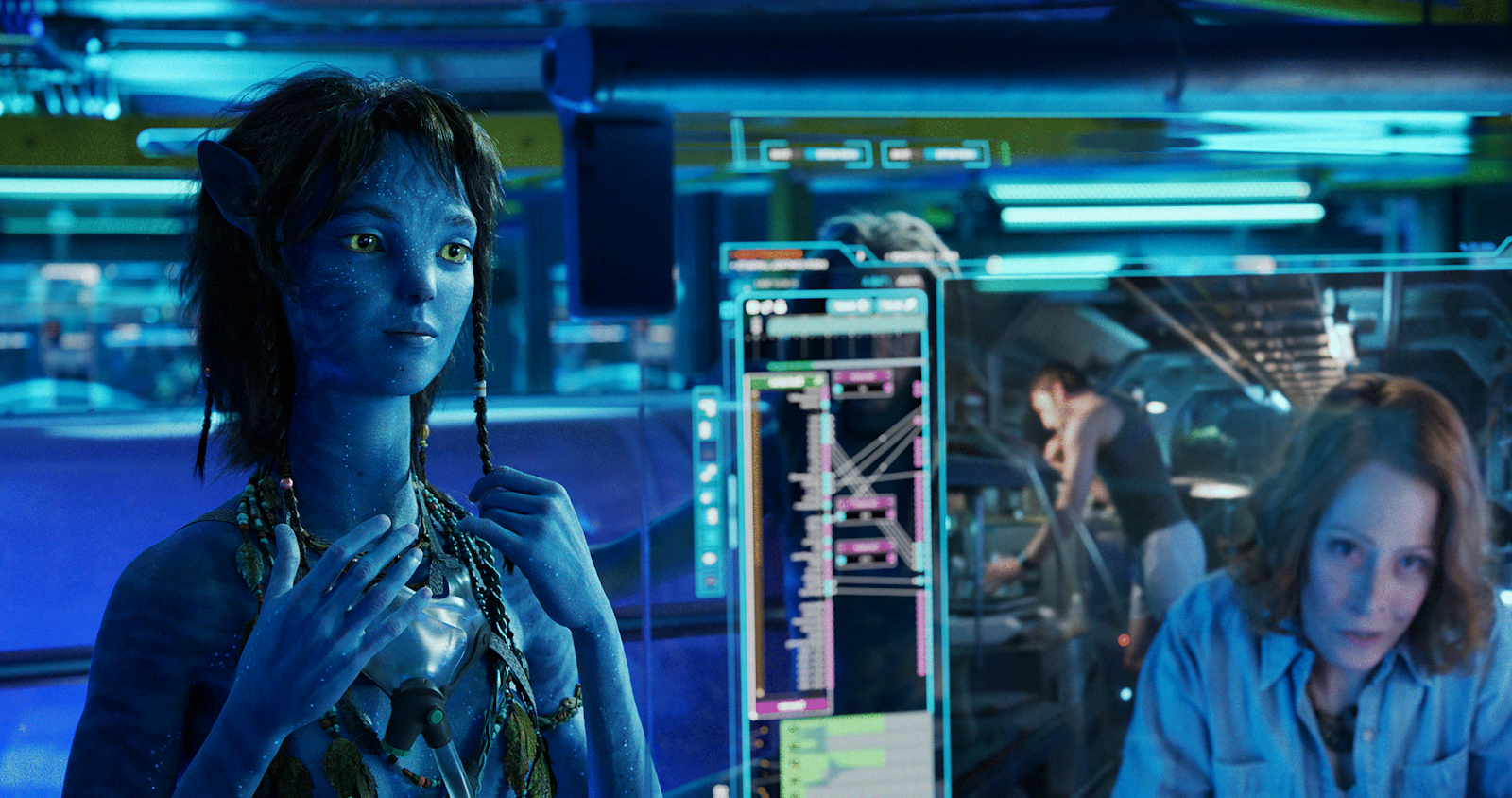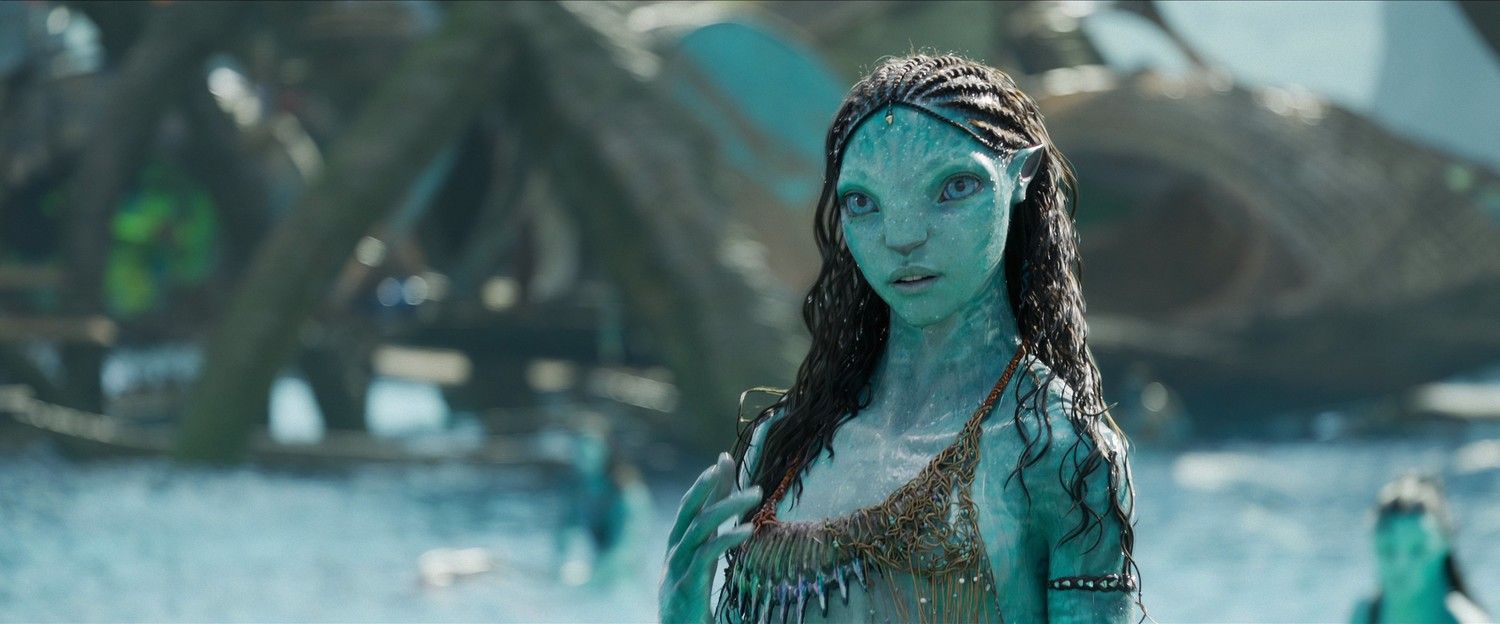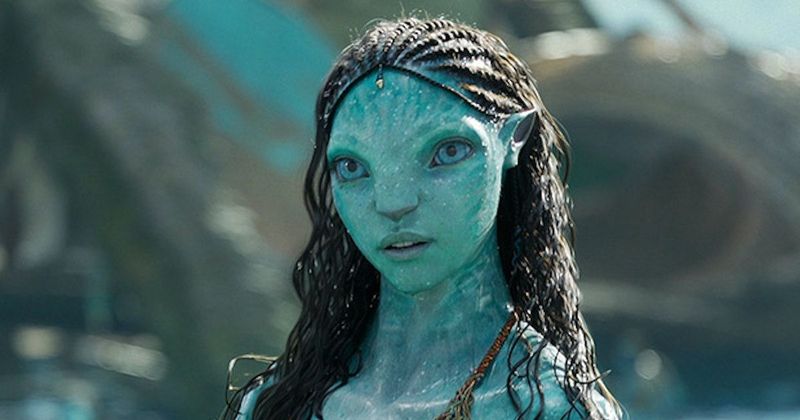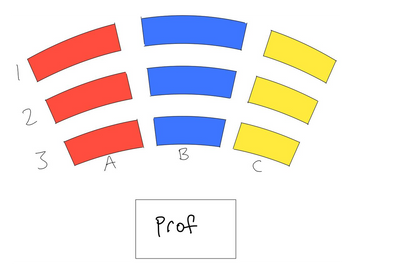Avatar: The Way of Water has grossed $1b in box office numbers in just over two weeks. It is no less a cinematic feat than the first Avatar that was released back in 2009. It is a glossy, sparkling new thing — the CGI is stunning, and if you’re just here to have a good time, it has a pretty decent plot.
But I’m not here to have a good time.
To be fair, I’m not criticising the movie in bad faith (no, not the legal term. The general term) Objectively Avatar 2 is worth a watch for a feel good story about blue people and aquatic alien wildlife and family dynamics. However, I am particularly sensitive to The Male Gaze™, and general misogyny — you know, being a woman and all.
There are a hundred different things I could complain about — why do all the Na’vi speak the same language, shouldn’t there be regional differences in dialect? How is Jake Sully a military dad who forces his kids to call him ‘sir’ and his kids just have no daddy issues? Additionally, Sigourney Weaver playing a child actively removed me from the cinematic experience every time she spoke.

However, these are all subjective to me personally. Another viewer could think that Sigourney Weaver’s performance as Kiri was outstanding and deserving of an Oscar.
The presence of misogyny, intended or not, is not subjective. It is objective. One could argue about the extent to which the misogyny exists, or why such misogyny should negatively impact one’s viewing experience. I’m not here to do that. I’m here to point out the misogyny that irked me, that rubs me the wrong way. What you do with that information is up to you.
I will, however, express my own opinion on such misogyny and how it impacted my viewing experience.
The term the male gaze was first coined by art critic John Berger to analyse nude women in European painting. The more modern, feminist usage of the term as the layman knows it was developed by film theorist Laura Mulvey. In her essay ‘Visual Pleasure and Narrative Cinema’, she defined the male gaze as the power to look. Such power culminates in film being crafted for the cis straight (mostly white) male audience, and in such films women are reduced to being passive objects for the male viewer.
The male gaze is not just the eye line of a male audience member.
It is an entire constructed experience, from the filmmaker, the actors, the actresses, the producers, and finally, the audience.
That’s why the first red flag is James Cameron, defending why he included the flying scenes in the first Avatar, says: “I want to see it.”
He makes films for himself.
Naturally, the male gaze manifests itself (perhaps unintentionally) in the way the character Tsireya is introduced.

In what her own actress, Bailey Bass, describes as a ‘James Bond moment’ – a reference to Ursula Andress emerging out of the sea in a white bikini in the 1962 Bond movie Dr. No – Tsireya similarly emerges out of the sea, flipping her hair back, walking almost provocatively. The camera moves back and forth from Tsireya and Lo’ak, Jake’s son, clearly intending to show that this is Lo’ak’s point of view and that he’s enamoured with her.
The entire shot has me uneasy. Is this not the male gaze in action? Where the female character is reduced to an object in front of the camera? Where the entire scene is crafted for the man?
It doesn’t help that Tsireya’s entire character in this movie is reduced to being a source of comfort for Lo’ak.
Additionally, there are gender stereotypes being enforced within the world of the Na’vi.
The healers are the women. The ones more spiritually connected to Eywa, the Great Mother, are the women. It is Ronal (the wife of Tonowari, the leader of the Metkayina) who uses her medical expertise to heal Kiri when she falls into a coma. It is Ronal who suffers emotionally when her spirit tulkun is killed.
Neytiri’s interactions with Jake are sullied (pun intended) by the influences of gender. Neytiri has to tell Jake not to be too hard on his sons, to be softer and less masculine. When confronted with constant threat and persecution of the Omaticaya clan, Neytiri gives in to Jake’s decision to seek refuge amongst the Metkayina.
Not to mention the very static and monotone way the film centres the female experience around pregnancy and giving birth: Neytiri is pregnant in the first few scenes of the movie; Ronal is also heavily pregnant when she rides an Ilu (the cute plesiosaur-like sea creature) into battle.
In having these scenes, James Cameron highlighted that: “Well, if you’re really going to go all the way down the rabbit hole of female empowerment, let’s have a female warrior who’s six months pregnant in battle…To me, it was the last bastion that you don’t see. Wonder Woman and Captain Marvel — all these other amazing women come up, but they’re not moms and they’re not pregnant while they’re fighting evil.”
Does this not exclude women who are not able to get pregnant? What about women who choose not to give birth? What about trans women?

Still, it's important to keep in mind that James Cameron makes movies for himself. He probably wasn’t making a detailed statement on what he thinks on gender and women when he included that particular shot of Tsireya, or that it just so happens that in the world of the Na’vi, the spiritual leaders are mostly women.
It is, however, important to recognise the ways in which films depict gender (especially of an alien race that is strangely so human-like) and how that interplays with narrative, plot and human emotion.
I'll admit that one thing the film does really well is that it breathes life into the Avatar franchise. The children — all of them — are like taking a gulp of fresh air after being cooped up in a room. I want to keep watching them interact with each other, with this breathtaking alien world.
For all the subtext and subtle messaging on what it is to be a woman, I’m still going to see Avatar 3.






